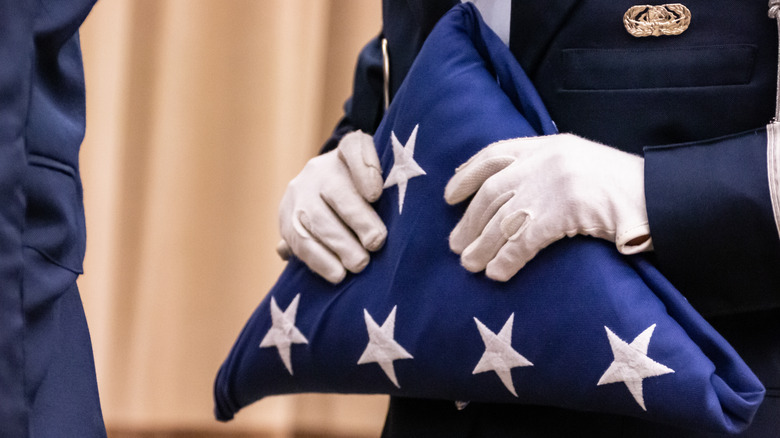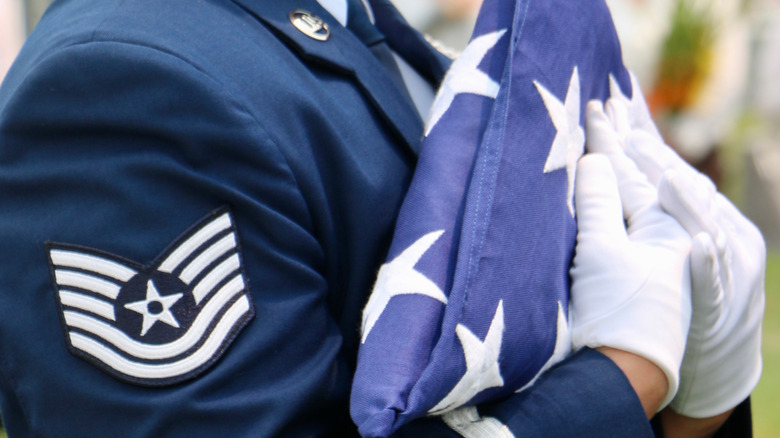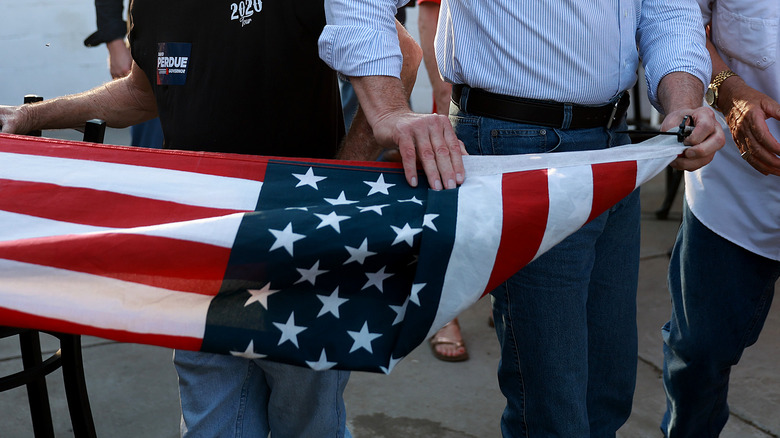Why The US Flag Is Folded The Way It Is
Since 1918, November 11th of each year has been dedicated to the memory of our lost veterans. On Veterans Day, we also honor those soldiers who have served and still live to tell the tale of their sacrifice. According to the office of Governor Gavin Newson, World War I officially ended on the 11th hour of the 11th day of the 11th month of that year — hence November 11.
Traditions are integral in paying homage to important dates, events, and people. Whether it's a specific holiday or something a little more concrete, there's no shortage of timeless, commemorative practices in our culture. If you've ever been to a soldier's funeral, you've probably observed a ceremony that involves folding the American flag a particular way and placing it atop the casket of the deceased. There's also a good chance you've wondered why this part of the process exists and, furthermore, why the flag is folded that way.
13 folds of the flag -- a brief history
Veterans Day isn't the only occasion (aside from military funerals) that pays tribute to our nation's heroes through the folding of the American flag 13 separate times. Whether it's Memorial Day, Flag Day, or the 4th of July, members of the armed services are offered plenty of opportunities to practice the folding of the flag. The National Flag Foundation reports that, despite its prevalence in most military ceremonies, we don't know exactly where or when the flag folding tradition started, though its meaning certainly isn't lost on us.
Some inquirers and historians have speculated whether or not the flag-folding ceremony may have roots in Gold Star Mothers of America or the U.S. Air Force, but as it stands, there's really no way of knowing. All the same, there's meaning behind every detail, every gesture, and every fold that goes into the tradition (per Military.com).
What the folds actually mean
There are several steps to the flag folding procedure, depending on the occasion, but in the context of a military funeral, the deceased soldier's casket is brought out draped in an American flag that appears inverted across the capsule. According to Military.com, the flag is then folded into its triangular shape and watched overnight by another member of the armed forces. The following morning, it is flown high to denote resurrection and resilience.
As far as the folds themselves go, the National Flag Foundation reports that each one has its own symbolic meaning. Whereas you might assume that, given there are 13 of them, the folds are intended to represent the 13 original colonies, that's actually not always the case. The themes characterizing each one range from life, eternity, faith, allegiance, death, devotion, etc., though meanings vary depending on the faction of the military or occasion at hand. You can read the entire list of them here.


